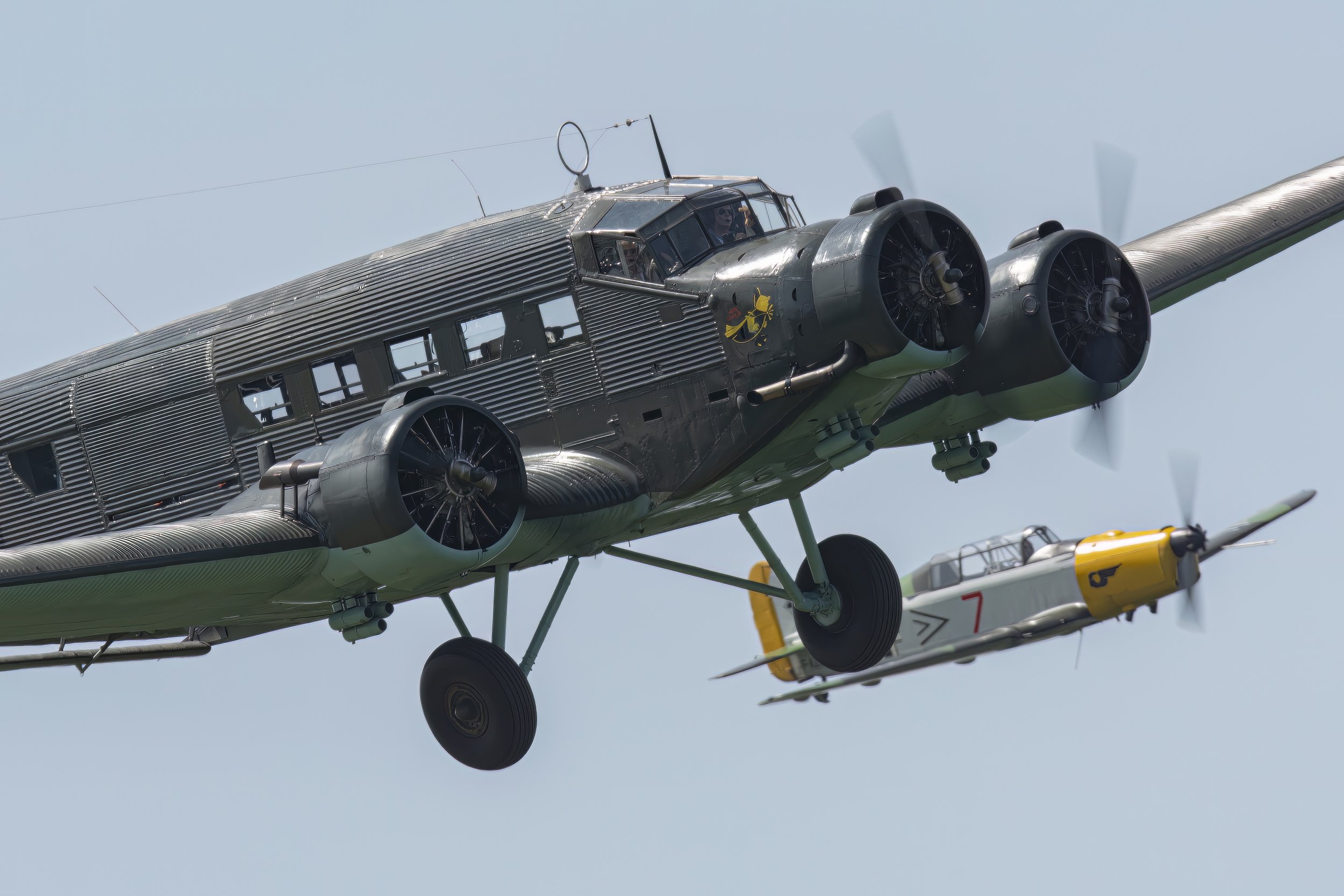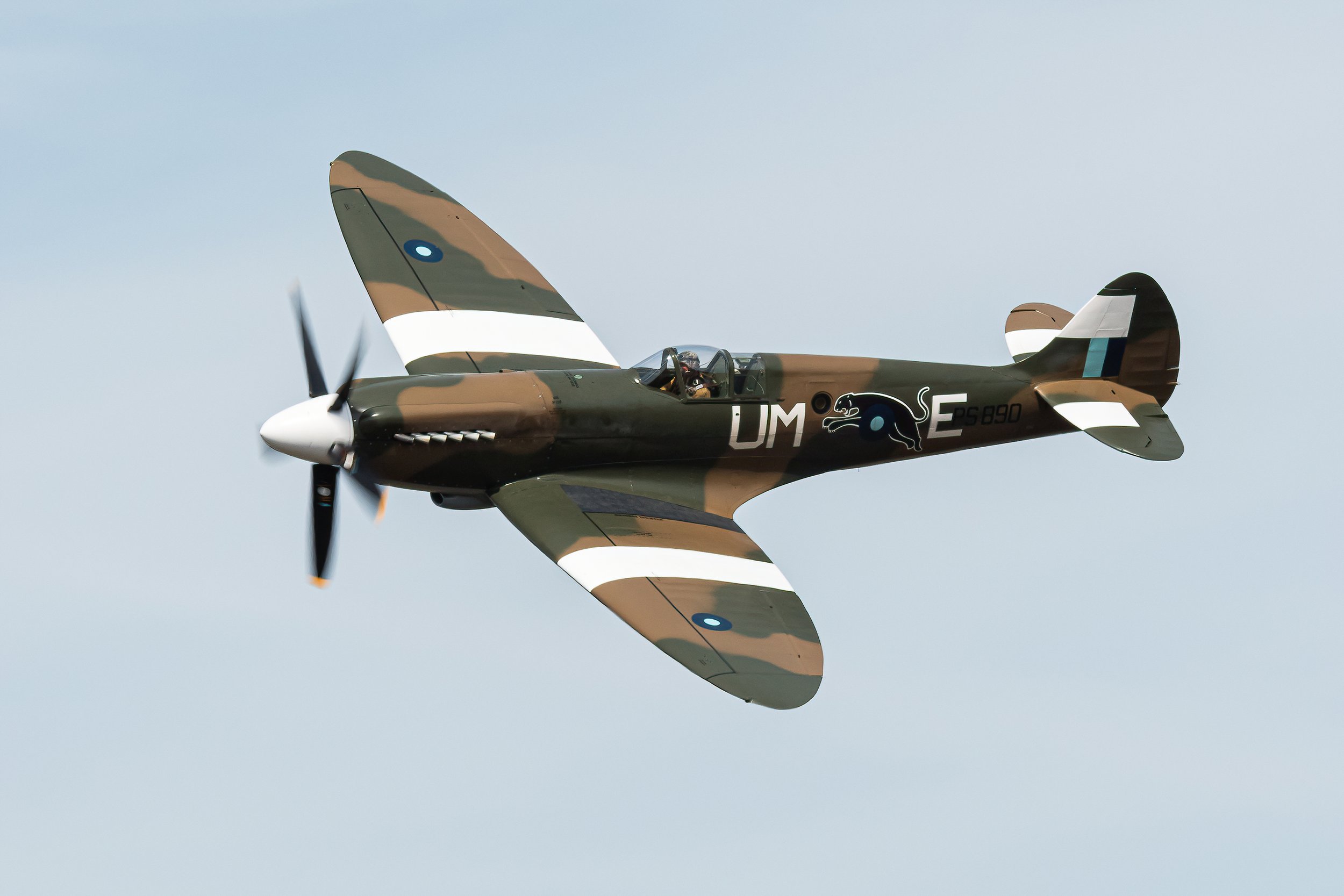Sabre F-AYSB
Year built
1958
Aircraft
Sabre 6
Base
Avignon-Provence Airport
This fighter is a Canadair CL 13B ‘Sabre’ Mk 6, version of the F-86E built under licence in Canada by Canadair in 655 copies.
This latest Canadian production series is considered to be the best ever produced. It is equipped with the Avro Orenda 14 engine of 3,306 kgp, more reliable, and 50% more powerful than that of the first American F-86s. The performance of the Mk. 6 at altitude and its rate of climb exceeded those of the Mk.5 model, fitted with an Orenda 10. In addition, the reappearance of the leading edge slats on this version gives it excellent flight characteristics at low speed.
Produced in 1958 with serial number S6-1675, this fighter first served with the Luftwaffe, at Waffenschule 10, with JD + 103 and BB + 284, then with KE + 104. It was then modified for towing targets and received the code 0113.
It subsequently flew for the Messerschmitt-Bolkow-Blohm company from 1970 to 1977 before being purchased by British collector Ormond Haydon-Balllie who stored it in Great Britain. In 1979, the American company Flight Systems Inc. repatriated and refurbished it for target towing missions, and continued to fly it until 1997.
After several changes of owner, it was acquired by the collector Richard Sugden in 2006. The latter had it completely rebuilt, demilitarised it and gave it its current livery, which corresponds to the experimental camouflage worn by some F-86s of the 461st Fighter Day Squadron when stationed in Germany in the mid-1960s.
In 2017, pilot Vlado Lenoch died in a plane crash. In his honour, a group of his friends sought to bring back to American soil his former P-51D Mustang ‘Moonbeam McSwine’.
Frédéric Akary, who had owned it for five years, accepted their offer to exchange his P-51 and the F-86. The Sabre thus joined France in 2019.
There are only 12 examples of Sabre in flight condition left in the world, and this is the only one in Europe.
| Back to Top |
North American F-86 Sabre
The North American F-86 Sabre, sometimes called the Sabrejet, is a transonic jet fighter aircraft. Produced by North American Aviation, the Sabre is best known as the United States' first swept-wing fighter that could counter the swept-wing Soviet MiG-15 in high-speed dogfights in the skies of the Korean War (1950–1953), fighting some of the earliest jet-to-jet battles in history. Considered one of the best and most important fighter aircraft in that war, the F-86 is also rated highly in comparison with fighters of other eras. Although it was developed in the late 1940s and was outdated by the end of the 1950s, the Sabre proved versatile and adaptable and continued as a front-line fighter in numerous air forces.
Its success led to an extended production run of more than 7,800 aircraft between 1949 and 1956, in the United States, Japan, and Italy. In addition, 738 carrier-modified versions were purchased by the US Navy as FJ-2s and -3s. Variants were built in Canada and Australia. The Canadair Sabre added another 1,815 aircraft and the significantly redesigned CAC Sabre (sometimes known as the Avon Sabre or CAC CA-27), had a production run of 112. The Sabre is by far the most-produced Western jet fighter, with a total production of all variants at 9,860 units.
The F-86 was produced as both a fighter-interceptor and fighter-bomber. Several variants were introduced over its production life, with improvements and different armaments implemented (see below). The XP-86 was fitted with a General Electric J35-C-3 jet engine that produced 4,000 lbf (18 kN) of thrust. This engine was built by GM's Chevrolet division until production was turned over to Allison. The General Electric J47-GE-7 engine was used in the F-86A-1 producing a thrust of 5,200 lbf (23 kN), while the General Electric J73-GE-3 engine of the F-86H produced 9,250 lbf (41 kN) of thrust.
The fighter-bomber version (F-86H) could carry up to 2,000 lb (907 kg) of bombs, including an external fuel-type tank that could carry napalm. Unguided 2.75-inch (70-millimetre) rockets were used on some fighters on training missions, but 5-inch (127 mm) rockets were later carried on combat operations. The F-86 could also be fitted with a pair of external jettisonable jet fuel tanks (four on the F-86F beginning in 1953) that extended the range of the aircraft. Both the interceptor and fighter-bomber versions carried six 0.50 in (12.7 mm) M3 Browning machine guns with electrically-boosted feed in the nose (later versions of the F-86H carried four 20 mm (0.79 in) cannon instead of machine guns). Firing at a rate of 1,200 rounds per minute, the 0.50-inch guns were harmonized to converge at 1,000 ft (300 m) in front of the aircraft, using armour-piercing (AP) and armour-piercing incendiary (API) rounds, with one armour-piercing incendiary tracer (APIT) for every five AP or API rounds. The API rounds used during the Korean War contained magnesium, which was designed to ignite upon impact, but burned poorly above 35,000 ft (11,000 m) as oxygen levels were insufficient to sustain combustion at that height. Initial planes were fitted with the Mark 18 manual-ranging computing gun sight. The last 24 F-86A-5-Nas and F-86Es were equipped with the A-1CM gunsight-AN/APG-30 radar, which used radar to automatically compute a target's range, which later proved to be advantageous against MiG opponents over Korea.
The Sabre's swept wings and the jet engine produced a flying experience that was very different from the propeller-driven fighters of the time. The transition from props to jets was not without accidents and incidents even for experienced fighter pilots. Early on in the jet age, some US manufacturers instituted safety and transition programs where experienced test and production pilots toured operational fighter squadrons to provide instruction and demonstrations designed to lower the accident rate.
Additionally, the ongoing technical development and long production history of the F-86 resulted in some significant differences in the handling and flying characteristics between the various F-86 models. Some of the important changes to the design included the switch from an elevator/stabilizer to an all-flying tail, the discontinuation of leading-edge slats for a solid leading edge with increased internal fuel capacity, increased engine power, and an internal missile bay (F-86D). Each of these design changes impacted the handling and flying characteristics of the F-86, not necessarily for the better. In the case of the solid leading edge and increased internal fuel capacity, the design change produced increased combat performance but exacerbated a dangerous and often fatal handling characteristic upon take-off if the nose were raised prematurely from the runway. This 'over-rotation danger is now a major area of instruction and concern for current F-86 pilots. The 1972 Sacramento Canadair Sabre accident resulting in 22 fatalities and 28 other casualties was a result of over-rotation on take-off.
| Back to Top |
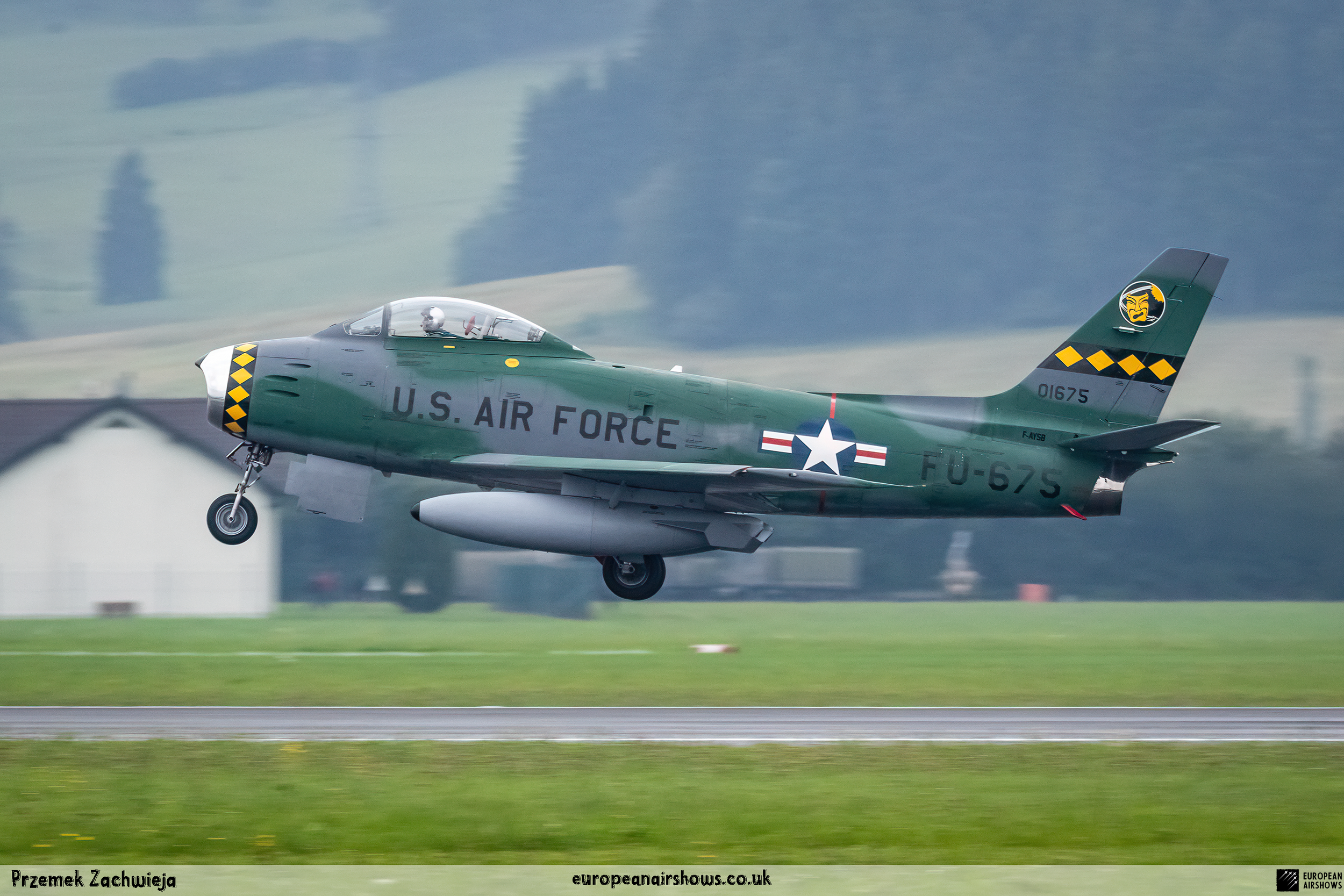

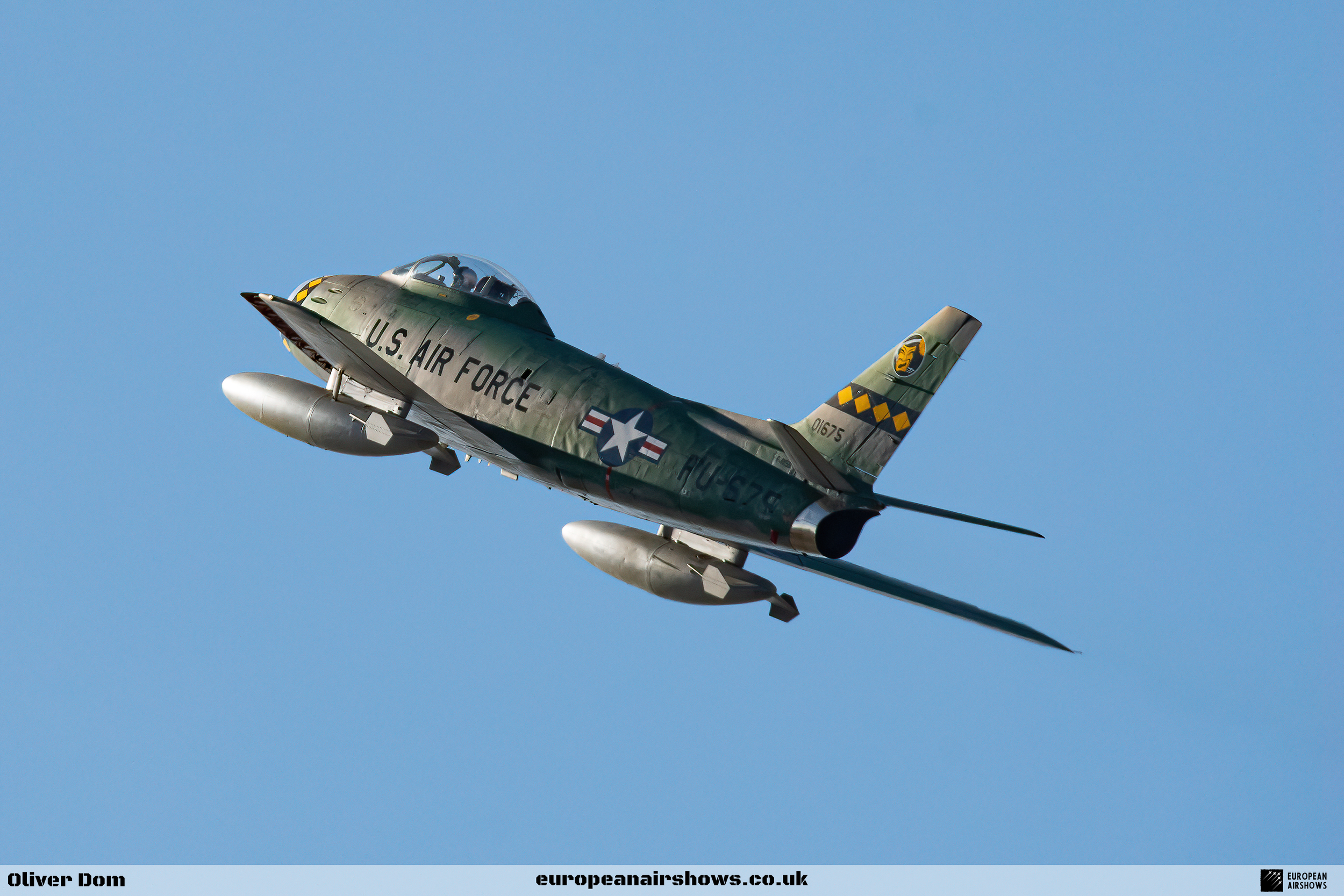

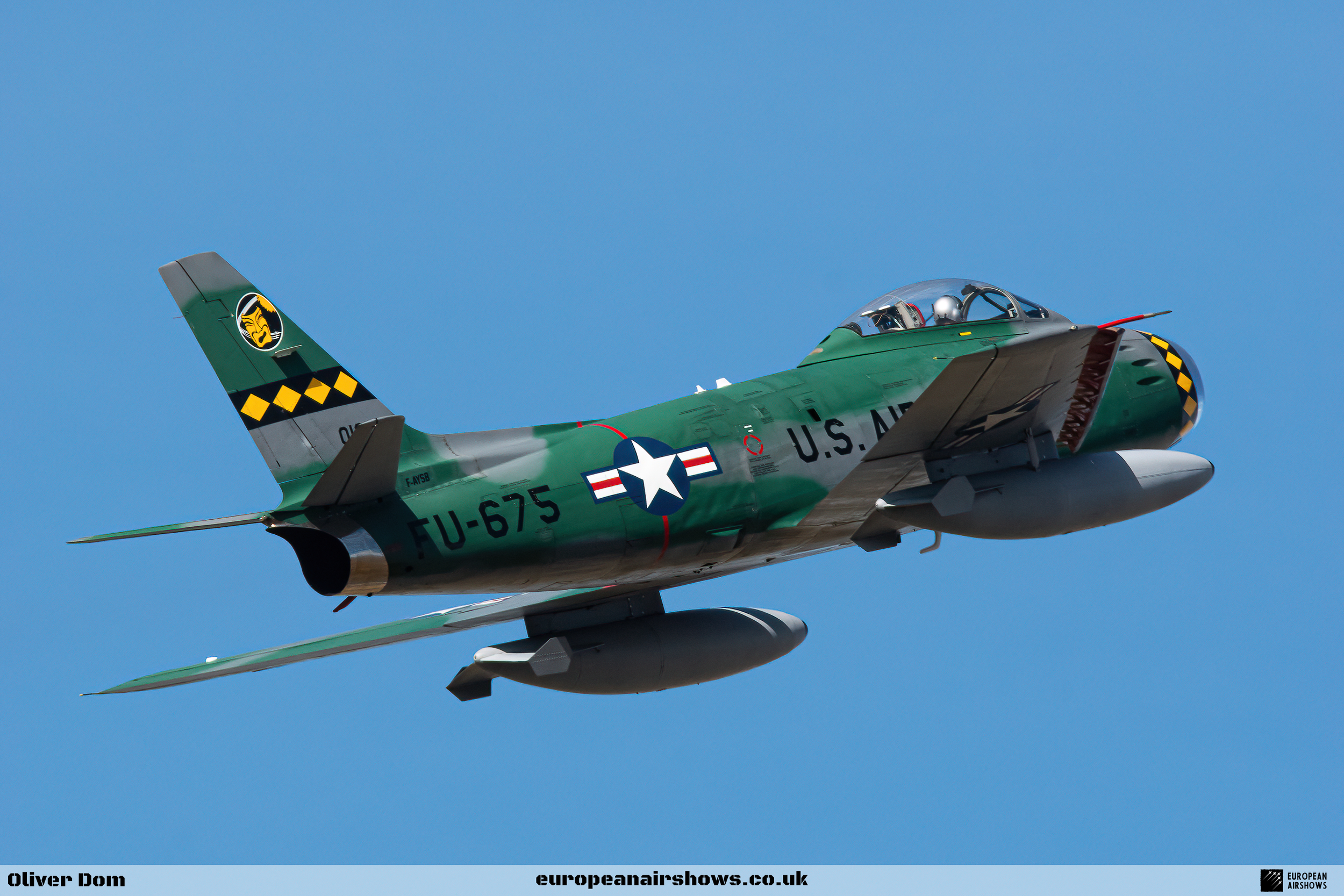

| Back to Top |







